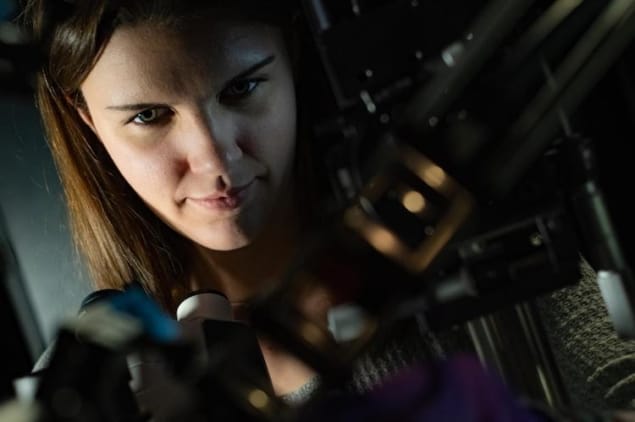
Technologies that rely on interactions between matter and polarized light usually stick to the well-understood effects of linear or circular polarization. Researchers at Rice University in the US have now opened the door to fresh approaches by studying how matter reacts to an additional form of polarization. This form, known as “trochoidal” polarization, is characterized by a “cartwheeling” motion in light’s electric field that can occur in either a clockwise or anticlockwise direction. Since matter can distinguish between these two directions, trochoidal dichroism could be used to develop novel spectroscopic tools.
Circularly-polarized light, in which the direction of the electromagnetic field rotates in a helical or “corkscrew-like” fashion as it propagates through space, is commonly used to study the conformation of small biomolecules such as proteins, DNA and amino acids. These studies are possible because such molecules are chiral – that is, their structures have a “handedness” that makes them absorb left- and right-circularly-polarized light differently, a phenomenon known as dichroism. Linear polarization is also widely used, for example to control reflections and glare in sunglasses.
The light polarization the Rice researchers studied is very different from these more familiar types. Rather than following a helical progression, the direction of the electromagnetic field in trochoidal light turns end-over-end as it propagates, rotating either clockwise or anticlockwise as it goes. “Rather like a rolling hula hoop,” explains study lead author Lauren McCarthy.
Measuring light scattered from plasmonic nanorods
The Rice researchers generated their trochoidal light waves by total internal reflection of linearly polarized light at an air-glass interface. This type of reflection produces a polarized evanescent wave – a light wave that exists only near a surface, unlike an ordinary, free light wave – and McCarthy and colleagues were able to tune its trochoidal properties by changing the polarization of the incident light.
The team then studied how pairs of particles known as gold plasmonic nanorods scattered this light. These particles are made from a metallic nanostructure that can be fine-tuned to absorb and scatter light of different frequencies thanks to the physics of plasmons – quasiparticles that arise when light interacts with the electrons in the metal and causes them to oscillate.
While trochoidal light polarization has been observed in previous experiments, McCarthy and colleagues are the first to use plasmonic nanoparticles to study how it interacts with matter. “Using a dark-field microscope and spectrometer, we found that clockwise and anticlockwise trochoidal polarizations interacted differently with pairs of plasmonic nanorods oriented at 90° from each other,” she tells Physics World. “Indeed, the wavelengths of light the nanorod pairs scattered changed when we switched the trochoidal polarizations from clockwise to anticlockwise, which is a well-understood indicator of dichroism.”
Spectroscopic signatures
Previous studies on trochoidal polarization have focused on properties such as the unique transverse spin angular momentum of the light’s electric field, which can enable light propagation in one direction, McCarthy adds. “Our study has instead looked at the spectroscopic signatures of matter irradiated with clockwise and anticlockwise light polarizations.”

Distorted nano-magnets for agile polarization control
Members of the team, who report their work in PNAS, say that trochoidal dichroism could aid the development of spectroscopic techniques that are complementary to established linear and circular dichroism spectroscopies. “Ultimately, dichroism is an optical indicator of molecular geometry,” McCarthy says. “Trochoidal polarizations, owing to their cartwheeling nature, would be ideally suited to probe cartwheeling charge motion in molecules, while circular dichroisms could probe helical charge motion.”
The researchers would now like to observe signatures of trochoidal dichroism in molecular systems, such as certain light-harvesting molecular antennas that feature charge motion that is both cartwheeling and helical. Such structures are expected to be particularly sensitive to trochoidal dichroism.
